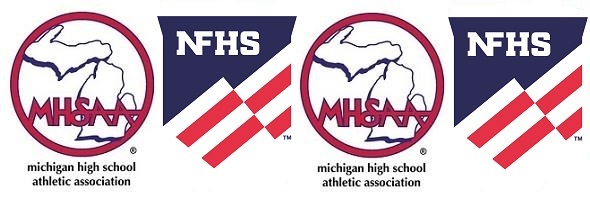
Truth About Sports Scholarships
March 30, 2018
 By Bob Gardner
By Bob Gardner
Executive Director of the National Federation of State High School Associations
Many parents are trying to live the dream through their sons and daughters – the dream of landing a college athletic scholarship by specializing in a sport year-round. Unfortunately, most of these dreams are never realized.
The odds of a sports scholarship paying for even a portion of a student’s college education are miniscule.
The College Board, a not-for-profit organization comprised of 6,000 of the world’s leading educational institutions, reports that a moderate cost for college students who attend a public university in their state of residence is $25,290 per year. The annual cost at a private college averages $50,900.
Meanwhile, the most recent data from the NCAA reveals that the average Division I athletic scholarship is worth only $10,400. More significantly, the same study shows that fewer than two percent of all high school athletes (1 in 54) ever wear the uniform of an NCAA Division I school.
Even if the dream is realized, parents likely will spend more money for club sports than they ever regain through college athletic scholarships. Thanks to the costs of club fees, equipment, summer camps, playing in out-of-state tournaments and private coaching, youth sports has become a $15 billion-per-year industry.
There is an option, and it’s a financially viable one: Encourage your sons and daughters to play sports at their high school.
In education-based high school sports, student-athletes are taught, as the term implies, that grades come first. The real-life lessons that students experientially learn offer insights into leadership, overcoming adversity and mutual respect that cannot be learned anywhere else. Unlike club sports, coaches in an education-based school setting are held accountable by the guiding principles and goals of their school district. And the cost of participating in high school sports is minimal in most cases.
While there is a belief that the only way to get noticed by college coaches is to play on non-school travel teams year-round, many Division I football and basketball coaches recently have stated that they are committed to recruiting students who have played multiple sports within the high school setting.
In addition, by focusing on academics while playing sports within the school setting, students can earn scholarships for academics and other talents—skill sets oftentimes nurtured while participating in high school activities. These scholarships are more accessible and worth more money than athletic scholarships. While $3 billion per year is available for athletic scholarships, more than $11 billion is awarded for academic scholarships and other financial assistance.
Without a doubt, your sons and daughters will have more fun, make more friends and be better prepared for life beyond sport by participating in multiple sports and activities offered by the high school in your community.

Adult Fans: HS Sports' Biggest Challenge
August 27, 2019


By Karissa Niehoff, NFHS Executive Director
and Mark Uyl, MHSAA Executive Director
Inappropriate adult behavior at high school athletic events in Michigan has reached epidemic proportion.
When more than 2,000 high school athletic directors were asked in a recent national survey what they like least about their job, 62.3 percent said it was “dealing with aggressive parents and adult fans.”
And the men and women who wear the black and white stripes agree. In fact, almost 80 percent of officials quit after the first two years on the job, and unruly parents are cited as the reason why. As a result, there is a growing shortage of high school officials here in Michigan, and in some sports like wrestling, swimming & diving and track & field, the shortage is severe. No officials means no more games.
If you are a parent attending a high school athletic event this fall, you can help by following these six guidelines:
1. Act Your Age. You are, after all, an adult. Act in a way that makes your family and school proud.
2. Don’t Live Your Life Vicariously Through Your Children. High school sports are for them, not you. Your family’s reputation is not determined by how well your children perform on the field of play.
3. Let Your Children Talk to the Coach Instead of You Doing It for Them. High school athletes learn how to become more confident, independent and capable — but only when their parents don’t jump in and solve their problems for them.
4. Stay in Your Lane. No coaching or officiating from the sidelines. Your role is to be a responsible, supportive parent — not a coach or official.
5. Remember, Participating in a High School Sport Is Not About Getting a College Scholarship. According to the NCAA, only about two percent of all high school athletes are awarded a sports scholarship, and the total value of the scholarship is only about $18,000.
6. Make Sure Your Children Know You Love Watching Them Play. Do not critique your child’s performance on the car ride home. Participating in high school sports is about character development, learning and having fun — not winning and losing.
Purchasing a ticket to a high school athletic event does not give you the right to be rude, disrespectful or verbally abusive. Cheer loud and be proud, but be responsible and respectful. The future of high school sports in Michigan is dependent on you.
The Michigan High School Athletic Association (MHSAA) is one of 51 members of the National Federation of State High School Associations (NFHS).

